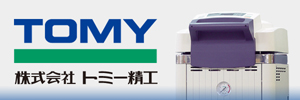PJ-164:Characterization of transposon mutants of Bradyrhizobium elkanii USDA61 that formed effective nodule on Rj4 soybean
1Tokyo University of Agriculture and Technology, 2Kyoto Sangyo University, 3Tohoku University
Legume-rhizobium symbiosis is of great importance in agricultural production and nitrogen cycling. While these mutualistic symbioses can involve a wide range of rhizobia, some legumes exhibit incompatibility with specific strains resulting in ineffective nodulation. The formation of nodules in soybean (Glycine max) is controlled by several host genes, which are referred to as Rj. The soybean cultivar BARC2 carries the Rj4 gene, which restricts nodulation by specific strains including Bradyrhizobium elkanii USDA61. Here we employed transposon mutagenesis to identify the genetic locus in USDA61 that determines incompatibility with Rj4 soybean varieties. Introducing the Tn5 transposon into USDA61 resulted in the formation of nitrogen-fixation nodules on the roots of soybean cultivar BARC2 (Rj4Rj4). Sequencing analysis of the Tn5-flanking sequence revealed that six genes encoding putative histidine kinase, transcriptional regulator, DNA-binding transcriptional activator, Helix-turn-Helix type transcriptional regulator, phage shock protein, and cysteine protease were disrupted. The cysteine protease belongs to the C48 peptidase family, which contains the small ubiquitin-like modifier (SUMO) protease domain. The gene encoding the cysteine protease is preceded by a conserved cis-element (tts box) which found in the promoter regions of the genes encoding components of type 3 secretion system (T3SS). Besides, N-terminal sequence of the cysteine protease possesses some characteristics conserved among T3 secreted proteins. Expression analysis revealed that the cysteine protease gene was not expressed in some Tn5 mutants, suggesting their roles in the induction of cysteine protease. On the other hand, cysteine protease gene was expressed in a mutant, suggesting that the transposon inserted gene of the mutant might be involved in the secretion of cystein protease through T3SS. Regulatory cascade controlling expression of the T3SS effector will be discussed.
keywords:Bradyhizobium,nodulation restriction,symbiosis,effector,type 3 secretion system




